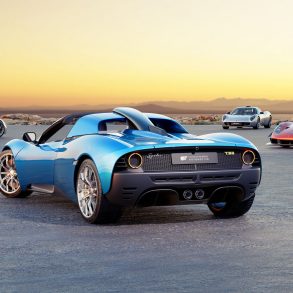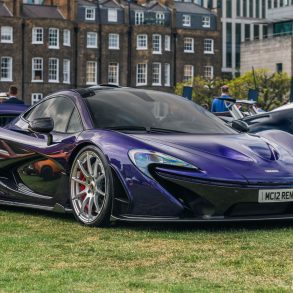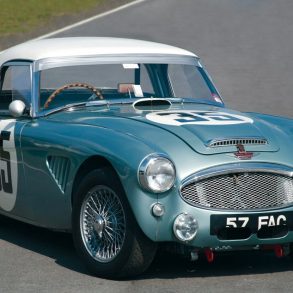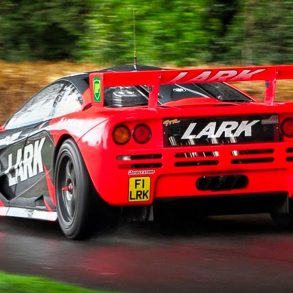In 1964, a 27-year-old Bruce McLaren declared that “Life is measured in achievement, not in years alone.” His company, Bruce McLaren Motor Racing Ltd, wasn’t even a year old.
Back then, Bruce’s vision was shared by fewer than half a dozen loyal souls who slogged across the world to race his cars. Today, the McLaren Group employs more than 2,000 people, all of whom still share Bruce’s ideals of combining sportsmanship with solid engineering practice and cutting-edge technical expertise.
On September 2nd 2013, the McLaren Group will celebrate its 50th anniversary.
McLaren has become a household name among automotive enthusiasts, partly because their almost perpetual Formula One success, and partly because of their road cars. Since McLaren’s arrival in Formula One at the 1966 Monaco Grand Prix, the team has won more races (182) than any other constructor, started from pole position 155 times and scored 151 fastest laps. In 2012, they achieved the fastest-ever time for a Formula One pitstop (2.31s at Hockenheim), recorded their 58th consecutive points-scoring finish, and have now officially led more than 10,000 racing laps. The world champions who drove for McLaren are also unforgettable. Emerson Fittipaldi ignited the passion of his native Brazil; James Hunt created as many headlines on the front pages as on the back; Niki Lauda and Alain Prost turned sport to science; Ayrton Senna exuded an unforgettable intensity and focus, while Mika Hakkinen and Lewis Hamilton will be remembered for their raw speed and fearless aggression.

McLaren’s legacy in North American sports car racing is arguably just as important. In the heyday of the mighty Can-Am series, McLaren was the team to beat, the benchmark to which all other Can-Am cars were compared. The orange McLarens, powered by thundering, ear-splitting V-8s took five successive championship trophies (1967-1971) and won an incredible 43 races, becoming sports car icons in the process.
McLaren went to the Indy 500 for the first time in 1970 and kept at it until victory finally came we in 1974 with Johnny Rutherford at the wheel. In 1976, Rutherford won America’s most famous race once more, again in a McLaren.
Technological innovation has been another facet of this celebrated company, and today, every single car in Formula One, the Indycar Series and NASCAR actually relies on McLaren Electronics’ standardised ECUs to control their engines and feed data back to the garage.
Introduced in 1993, the road legal McLaren F1 is still considered by many to be the world’s definitive supercar. To this day, it remains the fastest naturally aspirated production car in the world. In GTR racing guise, it won the 24 Hours of Le Mans, also scooping third, fourth and fifth places on its debut in 1995.
McLaren’s next road car project came several years later with German manufacturer Mercedes-Benz, and saw the successful build of the Mercedes-Benz SLR McLaren, which became the best-selling carbon-based car ever.


Since launching the MP4-12C in 2010, McLaren Automotive has become a top road car manufacturer, successfully developing and building the 12C and the 12C Spider sports cars. Both models exploit an intimate understanding of carbon fibre and electronic driver systems to create an enviable mixture of weight, strength, performance and driveability.
McLaren successfully returned to their sports car roots when they debuted their MP4-12C GT3, a car that scored 19 victories on its competitive debut season in 2012. In September, as Vodafone McLaren Mercedes crossed the flag to win in Monza, McLaren’s GT cars also took top spot at races in British, French and Spanish championships.
Fittingly, this year McLaren Automotive will open its 50th dealership ahead of the worldwide launch of the P1 – the company’s newest model.
Away from the track, McLaren leads the world in the application of Formula 1 technology and expertise to other industries. McLaren Applied Technologies helped British cyclists, rowers, sailors and canoeists win 15 gold medals last summer. They worked alongside Specialized to design Mark Cavendish’s world championship-winning S-Works Venge bicycle. Working with Birmingham Children’s Hospital, they have also improved the monitoring of sick children in intensive care. McLaren has also designed systems to help the Bay Area Rapid Transit railway in San Francisco to run more efficiently and to reduce the CO2 emissions from plane movements at airports. It’s all a long way from a small south London lock-up back in 1963, but Bruce wouldn’t wish to merely look backwards without looking forwards as well.

Accordingly, as McLaren moves forward, echoes of its past will reverberate throughout this anniversary year.
Ron Dennis CBE, executive chairman, McLaren Group and McLaren Automotive, said, “McLaren’s history is long and storied, but McLaren’s legacy is harder to define – and that’s because it’s still being vividly written every day by the dedicated men and women who work at the McLaren Technology Centre.
“Bruce McLaren wrote the beginning of the story, and the legend is going to continue for many years to come. I’m only a chapter, not the book, and I want other people to come in and write their own chapters as time goes by. This is a book that’s still being written, and that, perhaps, is the greatest legacy of McLaren,” continued Dennis.
To find out more about McLaren’s current projects and programs, visit www.mclaren.com.
http://www.youtube.com/watch?v=23E1m8ZxFmU
[Source: McLaren]










